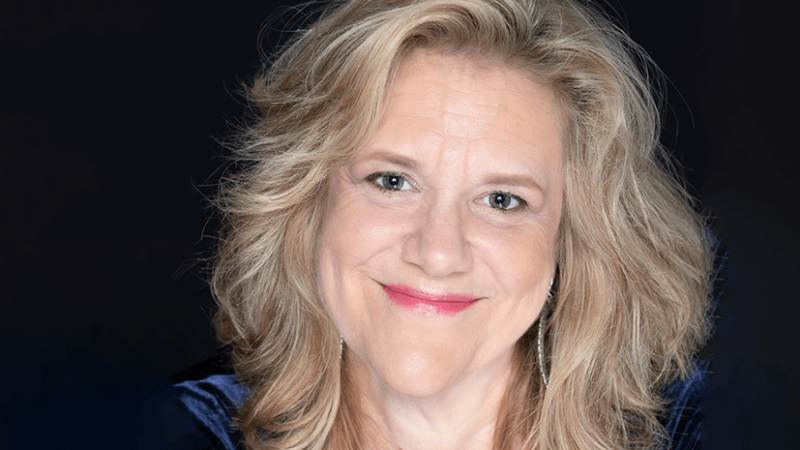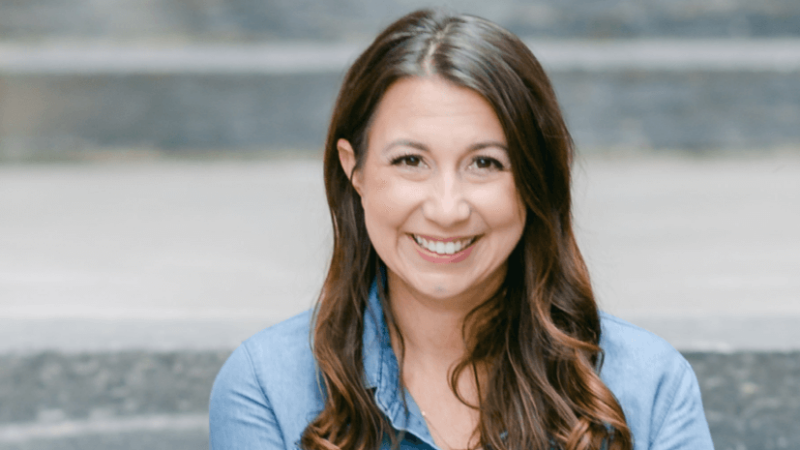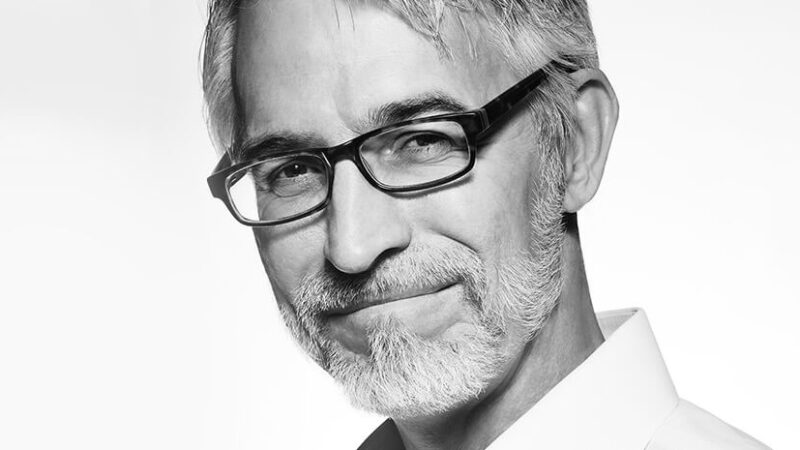-
E117: The Real Work: Letting Go from Within
Michael Singer — October 2, 2025
True spirituality isn’t about mystical experiences or lofty ideals—it’s about honestly facing...
-
Once More: Reflections on Reincarnation and the Gap Between Lives
Tami Simon — September 26, 2025
In this special reflection episode of Insights at the Edge host Tami Simon looks back on her...
-
Honey Tasting Meditation: Build Your Relationship with Sweetness
There is a saying that goes “hurt people hurt people.” I believe this to be true. We have been...
Written by:
Amy Burtaine, Michelle Cassandra Johnson
-
Many Voices, One Journey
The Sounds True Blog
Insights, reflections, and practices from Sounds True teachers, authors, staff, and more. Have a look—to find some inspiration and wisdom for uplifting your day.
Standing Together, and Stepping Up
Written By:
Tami Simon -
The Michael Singer Podcast
Your Highest Intention: Self-Realization
Michael Singer discusses intention—"perhaps the deepest thing we can talk about"—and the path to self-realization.
This Week:
E116: Doing the Best You Can: The Path to Liberation -
Many Voices, One Journey
The Sounds True Blog
Insights, reflections, and practices from Sounds True teachers, authors, staff, and more. Have a look—to find some inspiration and wisdom for uplifting your day.
Take Your Inner Child on Playdates
Written By:
Megan Sherer
600 Podcasts and Counting...
Subscribe to Insights at the Edge to hear all of Tami's interviews (transcripts available, too!), featuring Eckhart Tolle, Caroline Myss, Tara Brach, Jack Kornfield, Adyashanti, and many more.
Most Recent
Being Open to Open Monogamy
Tammy Nelson, PhD, is a licensed psychotherapist, Board Certified Sexologist, Certified Sex Therapist, and a Certified Imago Relationship Therapist. She is a TEDx speaker and the host of The Trouble with Sex podcast. Her six books include Getting the Sex You Want, The New Monogamy, and her latest work, Open Monogamy.
In this podcast, Dr. Nelson joins host Tami Simon for an informative and inspiring conversation about the emerging new definition of monogamy as people look beyond traditional marriage to find long-term happiness and fulfillment. Tami and Dr. Nelson also discuss the monogamy continuum—and how to talk about it with your partner; Dr. Nelson’s view that all consensual agreements between consenting adults should be normalized; “second adolescence” and opening relationships for the wrong reasons; engaging in “what if” conversations; why there’s never a coincidence in the partners that you choose; the pandemic’s impact on our sex lives and intimate relationships; monogamy and non-monogamy throughout the developmental phases of relationships; fear, trust, safety, and risk-taking; eroticism and self-awareness; the new terminology of open monogamy; and much more.
What You Can Do to Make Your Relationship Work
Elizabeth Earnshaw works with individuals, couples, and families and is the founder of A Better Life Therapy. She holds a master’s degree in marriage and family therapy, is a licensed marriage and family therapist, and is a certified Gottman Method couples therapist. Elizabeth also trains and supervises new therapists seeking their licenses in the counseling field. With Sounds True, she is the author of I Want This to Work: An Inclusive Guide to Navigating the Most Difficult Relationship Issues We Face in the Modern Age.
In this podcast, Sounds True founder, Tami Simon, speaks with Elizabeth Earnshaw about what she has discovered to be the building blocks for a successful relationship—and the most common pitfalls that can lead to irreparable damage. They also discuss the unique approach of the Gottman Method and the research behind it; the importance of turning toward your partner (and the dangers of turning away); “bids for connection” as key moments in relationship; the “four horsemen” of unhealthy communication: criticism, defensiveness, stonewalling, and contempt; the three Rs of a healthy relationship: reliability, respect, and responsiveness; interdependence, or how we balance our desires for connection and our desires for autonomy; repairing broken trust; the recent dramatic decline in the divorce rate; the connection between happy relationships and physical health; avoiding the trap of “triangulation”; and more.
Tracking Wonder
Jeffrey Davis is a researcher, consultant, and the founder of the Tracking Wonder Consultancy. With Sounds True, he’s released the new book Tracking Wonder: Reclaiming a Life of Meaning and Possibility in a World Obsessed with Productivity. In this episode of Insights at the Edge, Tami Simon speaks with Jeffrey about his lifelong work of understanding and spreading wonder. Jeffrey explains the six emotional facets that come together to create wonderment, as well as how to cultivate each in your daily life. Tami and Jeffrey discuss the value of accepting confusion, what we can learn from challenging times, and the positive emotions wonder cultivates. They talk about “wonder interventions” in the workplace and the untapped potential of focused daydreaming for robust creativity. Finally, Jeffrey and Tami discuss the power of personal devotions and the joyous act of gifting someone else with wonderment.
Customer Favorites
Diana Winston: The Big Bang of Natural Awareness
Diana Winston is is the director of mindfulness education at UCLA’s Mindful Awareness Research Center, a member of the Teachers Council at Spirit Rock Meditation Center, and a pioneer in mindfulness education for children. With Sounds True, she has released The Little Book of Being: Practices and Guidance for Uncovering Your Natural Awareness. In this episode of Insights at the Edge, Tami Simon speaks with Diana about “natural awareness”—an always-available, foundational flow state distinguishable from deliberate mindfulness practice. They share “glimpse practices” designed to open up perception and embodiment of natural awareness, commenting on how each can be practiced in day-to-day life. Diana and Tami discuss the value of going on retreat, the spectrum of different awareness practices, and common misconceptions about what it takes to become a mindfulness teacher. Finally, Diana explains why it’s important not to become a “bliss-ninny” as well as the difference between natural awareness and spacing out. (64 minutes)
A cure through love
It was Freud, in a letter to Carl Jung, who said: “psychoanalysis in essence is a cure through love.”
It hurts us so much when those around us are suffering, when those we care about are struggling. Maybe it’s one of our co-workers, an elderly person who is all alone, a client terrified in the face of a cancer diagnosis, one of our children whose self-esteem has been crushed, our partner who is so sad that our relationship is not flowing, or a close friend who is grieving the loss of her lover. What do we do? How can we help? What are the most effective ways to lessen their grief, their sadness, their anxiety, their shame, their fear? We hear that to truly love another is the most powerful form of healing – but what does this mean? When we’re with someone who is suffering, we can create with them a holding environment which allows their subjective experience to be exactly what it is. We can stay very close to their experience, allowing it to be metabolized in the space between us. They feel us right there with them, that warmth, that space in which all is welcome. They are able to be what they are, right then and right there, and know at the deepest level that they will be received, that they need not hold anything back, that there is a certain safety and ground in which all of the most precious pieces of their psyche, their heart, and their body can dance, can express, can unfold, and can become illuminated within the sacredness of the relational field.
In my experience, most of us, when confused or hurt or anxious or sad, want so deeply for our experience to be seen, to be met, to be touched, to be received into that relational field of space, kindness, presence, and warmth. We can be there for another in this way and really allow them to fall apart, to go crazy, to be confused all the way, to touch all of those thoughts, feelings, emotions, and sensations that have been kept at bay for so long. It sounds so simple, but in practice is in fact a revolution. When they know that we aren’t needing them to be different, when they know we will walk with them into terror, panic, depression, grief, anger, and fear, they soften, the space around us softens, and we are invited into the mystery, guided into the unknown together. We’re never sure what will be revealed there, but we are called nonetheless to move into this new territory together, with some crazy sense of faith that there is an intelligence here, a creativity that is pouring out of the beyond.
We long to somehow receive permission to be what we are, for another to understand how we are organizing our experience, for another to somehow be willing to enter into a burning love-field with us, without needing us to be different, to be “cured,” transformed, or even to heal. When we are truly met, when our subjectivity is deeply touched by another, with no agenda, a very organic process of healing is initiated – one that does not come from us or from our friend who is suffering, or even from what we want or think should happen – but seemingly from some mysterious Other. That Other is a raging field of intelligence and creativity, and has come to touch us, to hold us, and to show us something precious. When we allow ourselves to enter deeply into the subjective experience of another – and when they feel us with them inside of the cracks and crevices of each and every cell of their heart – love takes over, grace begins to whisper its secrets, and we turn toward home, together.

How to Bring Your Fear Out of Your Shadow
 If you’re looking for genuine transformation, you need look no further than your fear. For in it there exists not only an abundance of trapped energy, but also the very testing and challenge that we need in order to live a deeper, more authentic life.
If you’re looking for genuine transformation, you need look no further than your fear. For in it there exists not only an abundance of trapped energy, but also the very testing and challenge that we need in order to live a deeper, more authentic life.
The dragon’s cave awaits. However shadowed it may be, you know where it is, and you can see it more clearly as you move toward it, step by conscious step, bringing the fearful you into your heart, with your adrenaline not so much fueling your fear as your courage and investigative excitement.
The following guide can help you confront the dragons of fear as you navigate through your own unique shadow.
Get to know your fear. Study it, approach it, become more curious about it, turn on the lights. Get to know it even better. Go for an inside look at it, paying close attention to all of its qualities, static and otherwise. The more familiar you are with your fear, the less the chances are of you letting it control you.
Get to know its roots. The expression of your fear might be outside your shadow, but its origins, its foundational roots, may be in your shadow. You may, for example, begin with an obvious case of worrying and then drop below that to an anxiety that has been with you since you were young. Underlying that may be a survival-based panic that’s anchored in an even earlier time. Spelunk your depths.
Stop shaming yourself for being afraid. Everyone has fear, whether they admit it or not. The Dalai Lama has said he sometimes feels anxious. The more we shame ourselves—and are shamed—for being afraid, the more our fear will be driven into our shadow. Fear is natural, but what we do with it may not be so natural, such as when we pathologize it.
Open your heart to the frightened child in you. Develop as much compassion as possible for the fearful you. (This compassion comes from the you who is not caught in fear.) Don’t tell that child not to be afraid or that there’s nothing to be afraid of. Instead, be caring and protective enough to hold such fearfulness the same way you would a trembling infant. Remember that as a child you needed not just love but also protection. Being a good parent to your inner child will decentralize your fear so that instead of it holding you, you are holding it.
Instead of giving your fear higher walls, give it bigger pastures. Doing so expands you. This makes more room for your fear to shed some of its constrictedness and transition into excitement, allowing you more access to contexts other than that of fearfulness. Fear contracts our breathing, squeezing and gripping us, as if we’re stuck in a too-small enclosure, unpleasantly walled in. Giving our fear more room, more space, doesn’t make it worse but rather spreads out its energies, diluting its intensity and reducing the pressure.
Think of your fear as excitement in disguise. Where there’s fear, there’s excitement close by. Make a hard fist, tightly balled up, and imagine this is your fear. Then relax your hand, letting your fingers spread wide; this is your excitement, open and available. It’s the same energy, the same adrenaline, but the context has shifted dramatically. You weren’t trying to get excited; simply relaxing your fist freed up your energy. The fear initially is tightly held in the shadows; making conscious contact with it allows it to begin uncurling, to let some light in.
Keep your anger on tap. Take advantage of the fact that fear and anger are very closely related, being basically the same biochemically. Where fear contracts us, anger expands us, for better or worse. In fear we either tend to flee or freeze; we often feel paralyzed. But in anger we thrust forward, leaning into what angers us; our energies mobilize for taking strong stands. Some anger is a mask for fear, but plenty of anger is fearless fire, flaming through relational deadwood and obstacles to well-being, providing a torch that can illuminate even the darkest corners of our shadow.
Separate the content of your fear from its energy. When fear gets into our mind, we spin out storylines that can keep us in dark places internally, thought-cages packed with fearful ideas and expectations. When this happens, don’t think about your fear. Instead, bring your awareness as fully as possible to your body. Sense where in your body the energy of fear is strongest, taking note of the sensations there and their detailing. Stay with this body awareness, sensing instead of thinking, until you feel more stability. Soften your belly and chest, feeling how your breathing moves your entire torso, keeping some awareness on the arrival and departure of each breath.
Practice courage. Courage doesn’t mean we’re fearless but that we’re going ahead regardless of whatever fear we’re feeling. Start with small acts of courage, doing things that are a bit scary, a bit daunting. This could mean having a cold shower when you’re feeling overly sluggish, or saying no to a lunch date with a friend who you know you’ll find draining to be around today. Honor your everyday courage; sometimes getting out of bed asks more from us than does parachuting from a plane.
As you practice courage, more and more of your fearfulness will shift into resolve and action. Some of it may remain, keeping you on your toes. And some of it may morph into the kind of anger that helps fuel needed stands. Remember that practicing courage helps immensely in facing and entering your shadow.
Excerpted from Bringing Your Shadow Out of the Dark: Breaking Free from the Hidden Forces That Drive You by Robert Augustus Masters.

 Robert Augustus Masters, PhD, is an integral psychotherapist, relationship expert, and spiritual teacher whose work blends the psychological and physical with the spiritual, emphasizing embodiment, emotional literacy, and the development of relational maturity. He is the author of thirteen books, including Transformation through Intimacy and Spiritual Bypassing. For more information, visit robertmasters.com.
Robert Augustus Masters, PhD, is an integral psychotherapist, relationship expert, and spiritual teacher whose work blends the psychological and physical with the spiritual, emphasizing embodiment, emotional literacy, and the development of relational maturity. He is the author of thirteen books, including Transformation through Intimacy and Spiritual Bypassing. For more information, visit robertmasters.com.
Buy your copy of Bringing Your Shadow Out of the Dark at your favorite bookseller!
Sounds True | Amazon | Barnes & Noble | Indiebound





